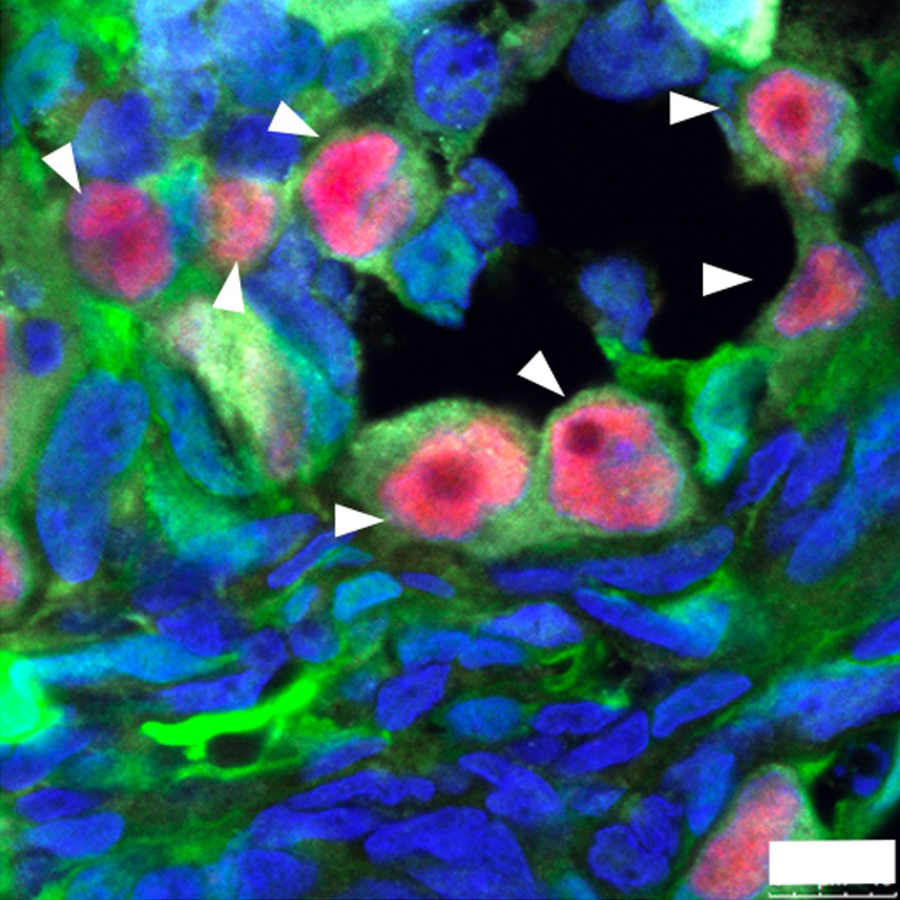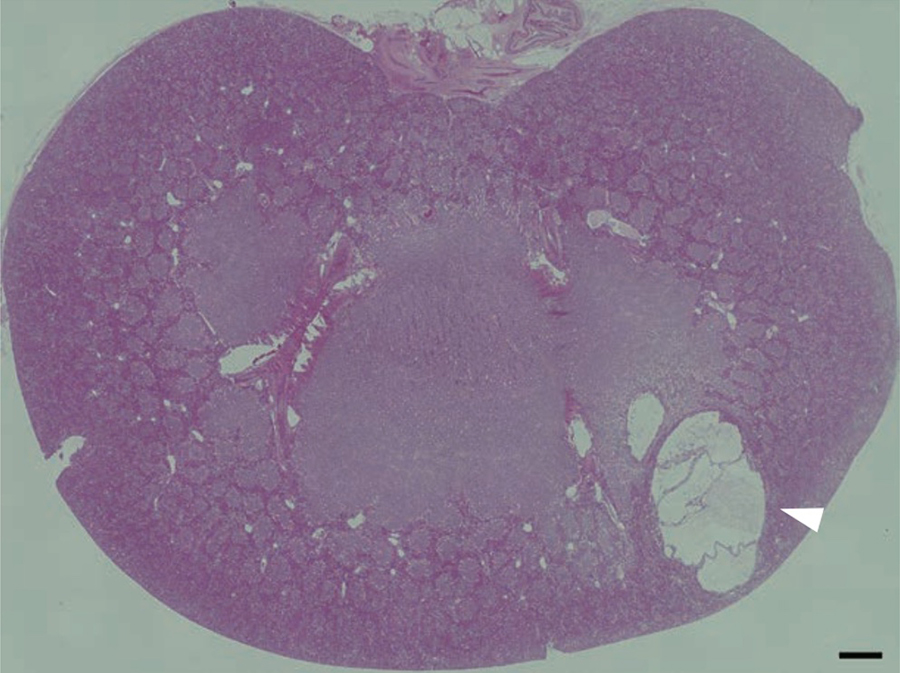Research Overview
Mice are valuable for human disease modeling; thus many genetically modified mice have been created over 40 years. However, mice poorly recapitulate some human diseases such as Parkinson’s disease, and others. Accordingly, it is required to establish animal models to recapitulate human diseases more faithfully. In this regard, nonhuman primates (NHPs) are considered one of the most valuable animal models, because NHPs are closer to humans in organ size and anatomical structure, and therefore have higher potential to recapitulate human diseases, while difficult genetic manipulation is a major issue for creation of the disease models. So far, we have established techniques to create transgenic and genome editing cynomolgus monkeys. By using these techniques, we have explored an intractable human disease, Autosomal dominant polycystic kidney disease (ADPKD) with CRISPR/Cas9 technique, and demonstrated that targeted disruption of PKD1, a causative gene for ADPKD can recapitulate the human ADPKD pathology. We believe that disease modeling with genetically modified-cynomolgus monkey will open the way for the elucidation of molecular mechanism of human diseases and new therapeutic approaches. This approach also may lead to the understanding how a species difference arises among mice, monkeys and humans during the evolution. We are also interested in primate-specific cellular and genetic program during embryonic development, especially epiblast versus primitive endoderm specification, and cardiovascular development.


Publications
Seita Y, Tsukiyama T, Azami T, Kobayashi K, Iwatani C, Tsuchiya H, Nakaya M, Tanabe H, Hitoshi S, Miyoshi H, Nakamura S, Kawauchi A, Ema M. (2019) Comprehensive evaluation of ubiquitous promoters suitable for the generation of transgenic cynomolgus monkeys. Biol Reprod. Mar 14. pii: ioz040. doi: 10.1093/biolre/ioz040.
Azami T, Waku T, Matsumoto K, Jeon H, Muratani M, Kawashima A, Yanagisawa J, Manabe I, Nagai R, Kunath T, Nakamura T, Kurimoto K, Saitou M, Takahashi S, Ema M.Klf5 maintains the balance of primitive endoderm to epiblast specification during mouse embryonic development by suppression of Fgf4. (2017) Development. 144, 3706-3718
Seita Y, Tsukiyama T, Iwatani C, Tsuchiya H, Matsushita J, Azami T, Okahara J, Nakamura S, Hayashi Y, Hitoshi S, Itoh Y, Imamura T, Nishimura M, Tooyama I, Miyoshi H, Saitou M, Ogasawara K, Sasaki E, Ema M.(2016) Generation of transgenic cynomolgus monkeys that express green fluorescent protein throughout the whole body.Sci Rep. 6: 24868.
Ishitobi H, Wakamatsu A, Liu F, Azami T, Hamada M, Matsumoto K, Kataoka H, Kobayashi M, Choi K, Nishikawa S, -I, Takahashi S, Ema M.(2011) Molecular basis for Flk1 expression in hemato-cardiovascular progenitors in the mouse. Development. 138, 5357-5368
*Ema M., Mori D., Niwa H., Hasegawa Y., Yamanaka Y., Hitoshi S., Mimura J., Kawabe Y., Hosoya T., Morita M., Shimosato D., Uchida K., Suzuki N., Yanagisawa J., Sogawa K., Rossant J., Yamamoto M., Takahashi S., * Fujii-Kuriyama Y. (2008) Krüppel-like factor 5 is essential for blastocyst development and the normal self-renewal of mouse ES cells. Cell Stem Cell. 3: 555-567
* Co-correspondence



